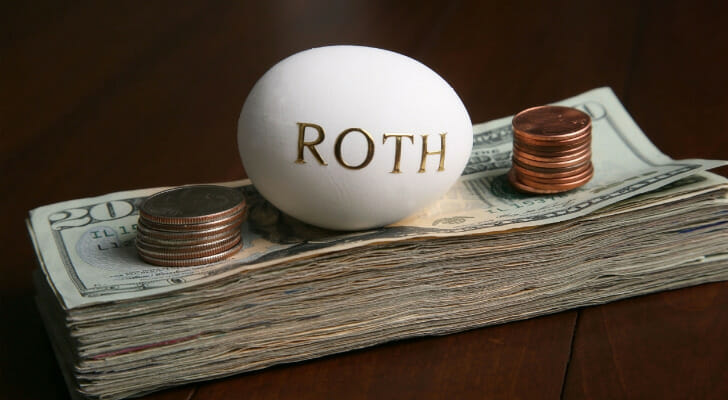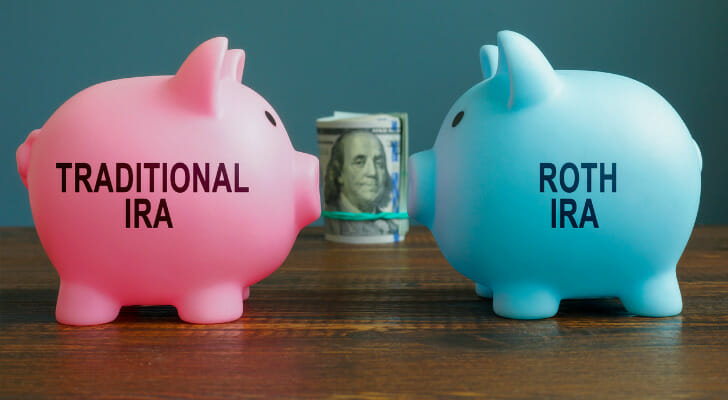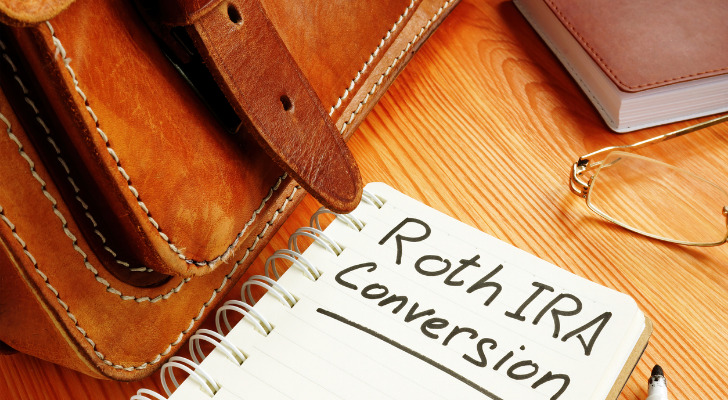If you have retirement money in a traditional individual retirement account (IRA), you will have to pay taxes on it when you retire and start taking distributions. A traditional IRA is funded with pre-tax dollars. However, if your money is invested in securities in a Roth IRA, that account is funded with after-tax dollars, and you will not have to pay taxes on your retirement income when you take distributions. If you convert a traditional IRA, or a portion of one, to a Roth IRA through a rollover, you have to pay taxes on the money from the traditional IRA at the time of conversion. If your IRA is large, that could be a lot of money. So why would you make the conversion? Here we discuss why a Roth conversion might be wise even with the tax liability, the steps to make the conversion and six special considerations.
Need help converting your IRA? Consider finding it with SmartAsset’s free financial advisor matching service.
Advantages of Making a Roth IRA Conversion

Most investors with retirement accounts take a long-term view of the market. There is the occasional need to make adjustments. Due to the COVID19 pandemic and the fallout from it, uncertainty, volatility and market fluctuations are ongoing. The advantages of a Roth conversion are:
- The taxable income generated by a Roth conversion can be offset by other losses. Many individuals and their businesses have been negatively impacted by the COVID19 pandemic and have a lower taxable income now and possible losses outside the retirement plan. The tax losses from a Roth IRA conversion can be offset by other losses. Capital losses can offset ordinary gains but are limited to $3,000.
- If asset values within the retirement plan are down, a Roth conversion will subject a lower amount of income to taxation. If asset values rebound after the Roth conversion then the investor will have made the right decision if the value of their portfolio had declined.
- If the tax rates go up in the future, a Roth conversion at this time may be wise. Investors fear an increase in tax rates in the future and think the Roth IRA is a safer bet since no taxes are due on Roth IRA retirement money at withdrawal.
- There are no required minimum distributions for a Roth IRA. If you don’t need the money in your Roth IRA, you can accumulate it for your heirs.
- A Roth IRA is good if your tax bracket may be higher during retirement than now. If you expect your tax bracket to increase after retirement, a Roth IRA is a good idea since you are not taxed on your withdrawals.
Converting to a Roth IRA may have some disadvantages in some cases. If you are going to need the money you convert to a Roth IRA before five years pass, you will face taxes and the 10% penalty on the money. This is called the five-year rule. It takes five years to become vested in a Roth IRA. If you don’t have the cash to pay the taxes that you incur for the rollover, don’t do a Roth conversion. A conversion will likely only be profitable if you have the extra money to pay taxes on the rolled-over contribution.
A Roth IRA conversion must be completed 60 days before the end of the tax year.
Steps to Convert a Traditional IRA to a Roth IRA
Here are the three steps to convert your traditional IRA to a Roth IRA:
- Determine if you are eligible to make the conversion. There are income levels you must follow to determine if you can open a Roth IRA account. For 2023, if you file taxes as either single or head of household, you can make up to a modified adjusted gross income (MAGI) of $138,000 for a contribution. The income level allows you a partial deduction up to $153,000 where it phases out completely. If you are married filing jointly or a qualified widower, the income level is $218,000 to $228,000. If you are married filing separately, you can make a partial contribution if you make less than $10,000 and no contribution if you make over that amount.
- Decide how much money you want to roll over to the Roth IRA. You don’t have to convert every dollar in your traditional IRA to a Roth IRA. You can do a partial conversion. There are issues to consider. Only convert as much as you are prepared to pay taxes on, both your contributions and earnings. If you think you will be in higher tax brackets in the coming years, try to convert as much as possible this year. You can only do one Roth conversion in a tax year. If you are still fairly young you may have time to convert part of your traditional IRA each year for a few years. However, you have to also remember the five-year rule or vesting requirement.
- Choose what type of rollover you want to do. There are three choices. You can do an indirect rollover. An indirect rollover occurs when you cash out your traditional IRA and have a check sent to you. You then invest that money in the Roth IRA within 60 days. If you don’t, you have to pay the taxes on it plus a 10% penalty. The second choice is a direct rollover. A direct rollover, also called a trustee-to-trustee rollover, is when you make a call to your financial institution and tell them to roll over your money from the traditional IRA to a Roth IRA at another financial institution. You must have already set up a Roth account at the receiving financial institution. Your financial institution will report the transaction on IRS Form 1099-R at the end of the tax year and your tax accountant will further report it on IRS Form 8606 with the taxable amount reported on Form 1040. The third choice is the same trustee transfer. You will have set up a new Roth IRA at your current financial institution and the trustee will simply transfer the money from one IRA to the other. The tax reporting procedure is the same as for a direct rollover.
Special Considerations

There are special considerations to think about when considering a Roth IRA conversion. These include:
- It may be wise to make the Roth IRA conversion early in 2024 for another reason. You could add a portion of your tax liability to each of your upcoming estimated tax payments.
- You can offset a Roth IRA conversion with a charitable contribution and not have to pay any taxes on the distribution. In this way, a charity of your choice will get the money instead of the Internal Revenue Service.
- When considering the effect of the income from a Roth conversion that will be added to your MAGI, you must also consider the effects higher income will have on your Social Security benefit and your Medicare premium if you are of retirement age.
- In addition to increasing your federal tax liability, you also have to consider the effect of a Roth conversion on your state tax liability. Check your state laws.
Bottom Line
Even though Roth IRA conversion can be a very good thing for your retirement years, it’s important to get the timing of your conversion right and consider all the additional factors mentioned above. Even with the tax liability of converting an IRA to a Roth IRA, it might still be a smart move.
Retirement Planning Tips
- A financial advisor can help you get your retirement accounts in order. Finding a financial advisor doesn’t have to be hard. SmartAsset’s free tool matches you with up to three vetted financial advisors who serve your area, and you can have a free introductory call with your advisor matches to decide which one you feel is right for you. If you’re ready to find an advisor who can help you achieve your financial goals, get started now.
- Social Security payments are part of your retirement plan, too. Use SmartAsset’s Social Security calculator to see what your payments might look like.
Photo credit: ©iStock.com/designer491, ©iStock.com/jygallery, ©iStock.com/designer491
